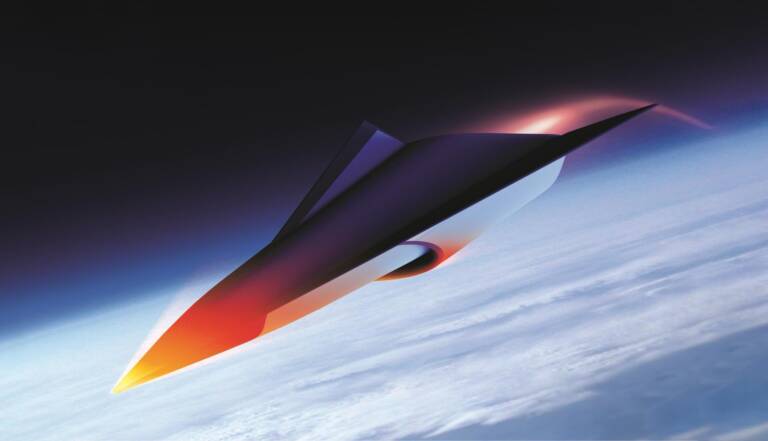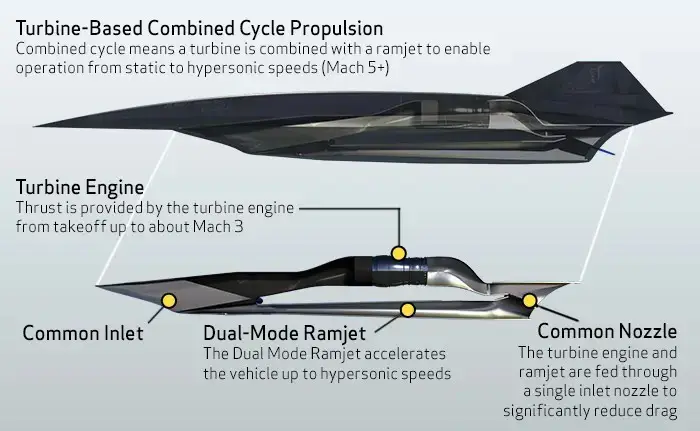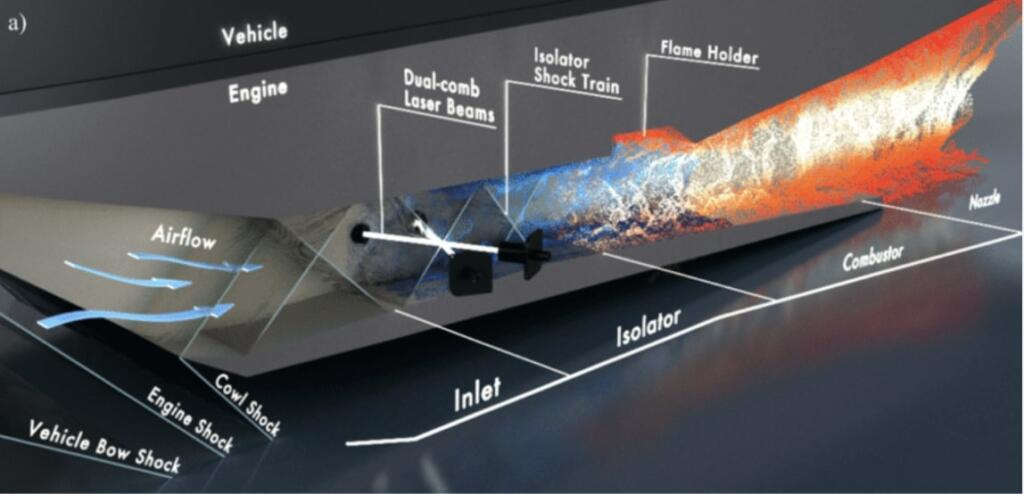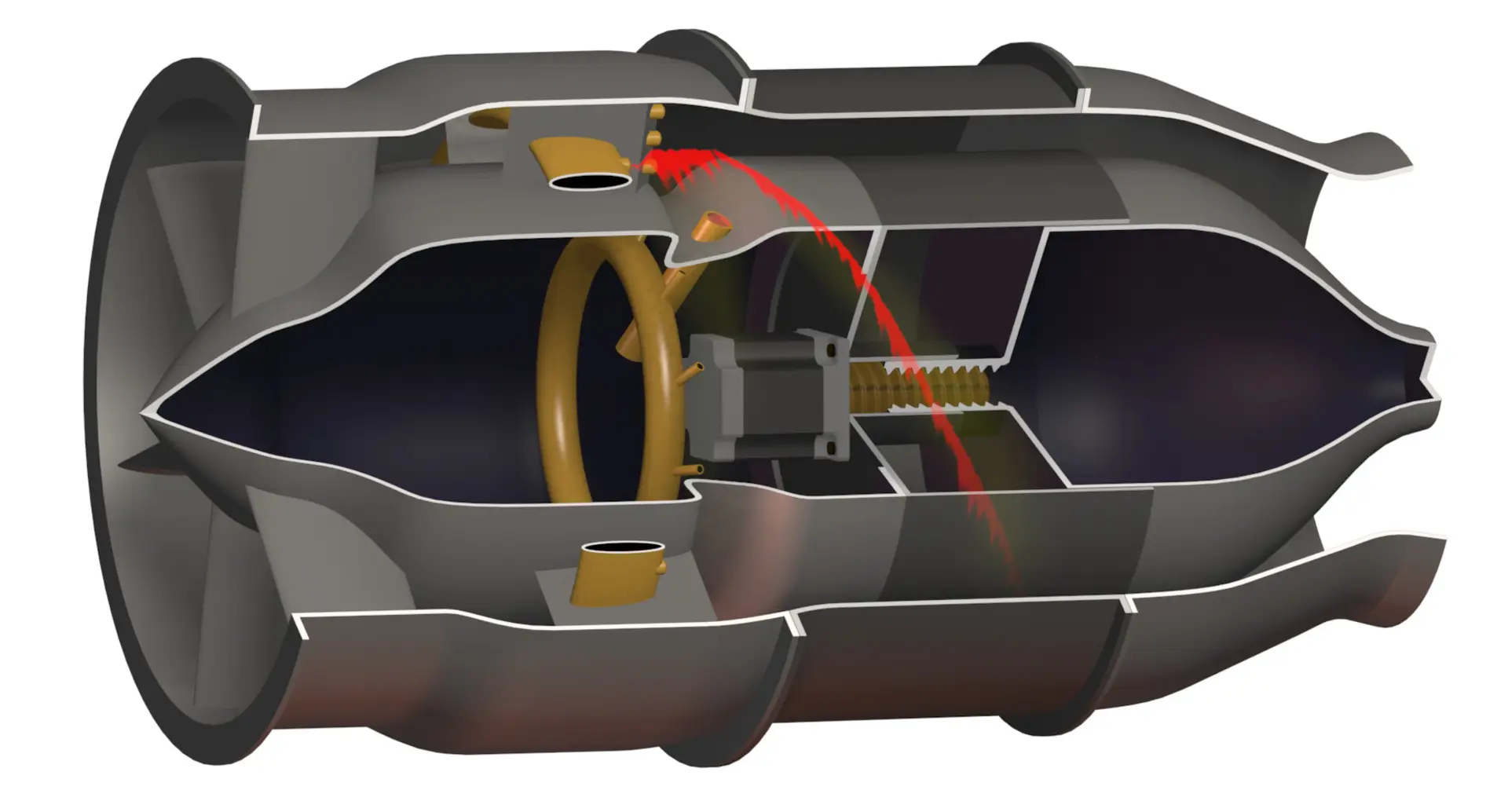General Electric tests a new hypersonic rotary pulse jet engine

General Electric Aerospace, a subsidiary of General Electric, announced that its engineers have successfully remotely tested its latest hypersonic engine.
During testing, the dual-mode hypersonic ramjet engine (DMRJ), a detonating combustion engine in a ramjet, was installed on a test system General Electric (GE) and other companies such as Raytheon, which are working on this engine, they believe it could enable faster, longer-range flight with greater efficiency in hypersonic propulsion.
Faster, longer range, more efficient
The test was conducted in a supersonic flow at the Global Research Center in Niskayuna , New York. This innovative engine has the potential to power hypersonic vehicles, enabling greater efficiency and greater autonomy, with the possibility of reaching speeds exceeding Mach 5, that is, five times the speed of sound.
The GE Aerospace team has been working on the new DMRJ with remote detonation combustion (RDC) for a year. GE says it plans to demonstrate a full-scale version of this system next year. Typically, air-blown DMRJ propulsion systems require supersonic speeds above Mach 3 to operate. However, engineers at GE Aerospace are developing a dual-mode ramjet with rotary detonation that can operate more efficiently at lower Mach speeds. This innovation will allow air vehicles to achieve greater autonomy and operate more efficiently.
To that end, GE Aerospace last year acquired Innoveering, a company specializing in hypersonic propulsion. GE Aerospace has combined its high-Mach RDC and R&D expertise with Innoveering's dual-mode ramjet engine capabilities. RDC technology allows for more efficient fuel combustion using detonation waves, resulting in higher thrust generation, smaller engine size and lower weight than traditional jet engines.
An RDE Rotating detonation engine is similar to a pulsed detonation engine, (PDE), or pulse jet, like the one that was famously used in the German V1 flying bombs of World War II. However, the key difference is that while a PDE requires emptying the detonation chamber after each pulse, and this is done by opening a system of valves which is the only moving part, in an RDE the waves go around to the combustion chamber, making the process self-sufficient without the need for moving parts. 
The engine consists of two parts: the first which is a reactor with a turbine suitable for high speed which is capable of pushing the engine to Mach 3. At this point the first engine leaves the scene and the RDE engine starts which brings the aircraft to maximum performance. However, here is a video presenting the engine.
Mark Rettig, vice president and general manager of GE Aerospace's Edison Works Business and Technology Development division, said the successful development, integration and demonstration of GE's technologies and capabilities will enable it to offer customers unique hypersonic propulsion systems both currently and in the future.
“We have brought together the right skills, with the right capabilities, and have invested strategically to ensure we are aligned with the needs of our customers. The significant results achieved so far give us confidence that we are going in the right direction,” said Rettig. Rettig also said the GE team has made significant progress in a short amount of time. It took just 12 months to complete the DMRJ with the RDC demonstration. The team is currently working to demonstrate a full DMRJ with RDC at scale next year and is on track to reach its goal.
GE Aerospace separates
“The very successful demonstration of a DMRJ with RDC is the result of more than ten years of work on the RDC, including the strategic acquisition of Innoveering, which brought leading technologies and expertise in hypersonic propulsion and ramjets,” he said Amy Gowder, president and CEO of GE Aerospace, Defense and Systems. GE Aerospace will become a standalone company between March and July next year, as part of the ongoing breakup of the GE conglomerate.

Thanks to our Telegram channel you can stay updated on the publication of new Economic Scenarios articles.
The article General Electric tests a new hypersonic rotating pulsejet engine comes from Economic Scenarios .
This is a machine translation of a post published on Scenari Economici at the URL https://scenarieconomici.it/general-electric-testa-un-nuovo-motore-ipersonico-a-pulsogetto-rotante/ on Fri, 15 Dec 2023 20:03:11 +0000.


